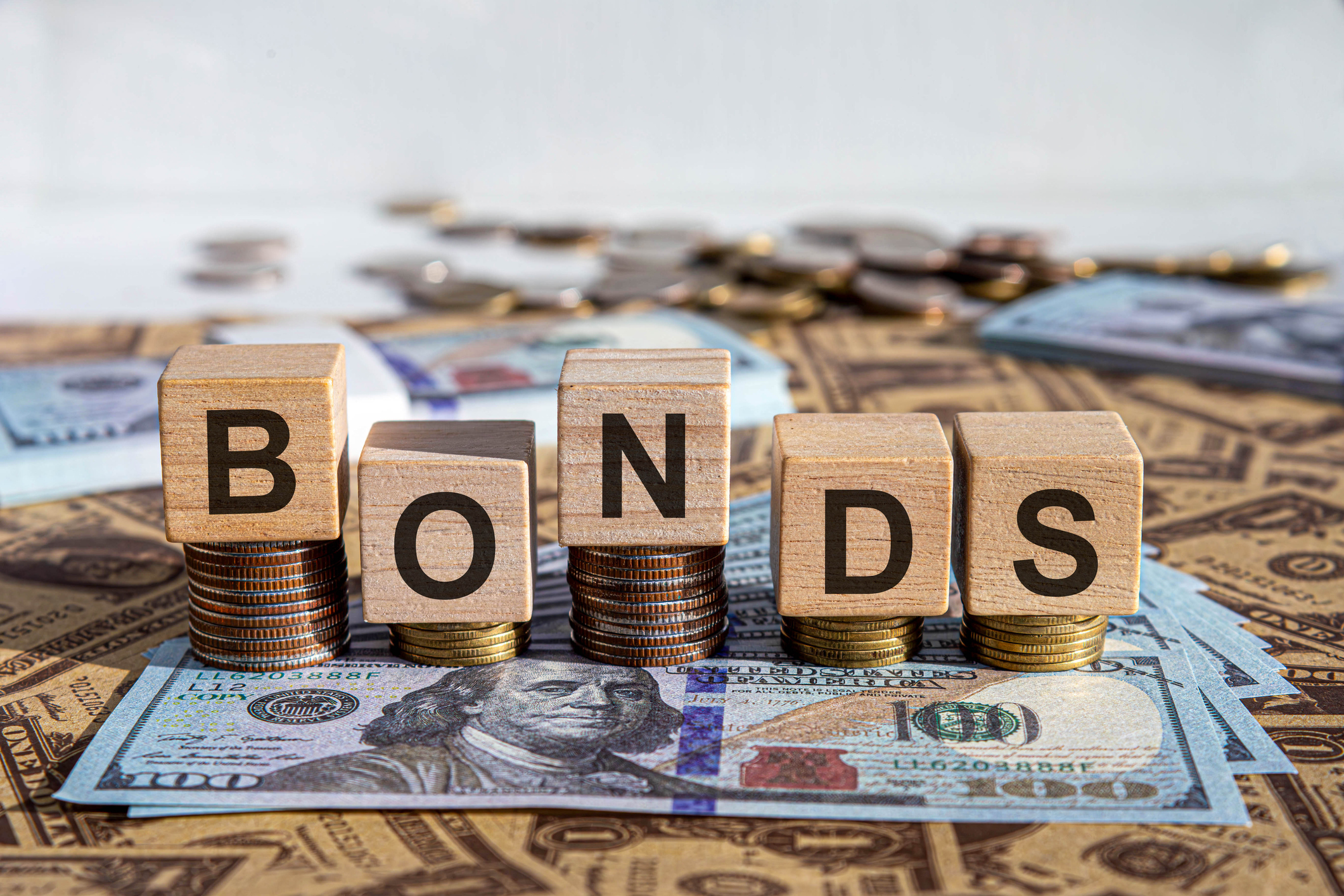The Best Active ETFs to Buy
The best active ETFs offer potential outperformance over an index benchmark, but be aware of higher fees, greater turnover and manager-specific risks.


The most recent updates to the long-running S&P Indices Versus Active (SPIVA) scorecard continue to paint a sobering picture for active fund managers. Over the past decade, 84.34% of large-cap mutual funds underperformed the S&P 500.
Similar trends appear across most equity categories: mid- and small-cap funds, value and growth styles, and even international equities, where long-term active underperformance remains the norm. While fixed income has shown some short-term advantages for active managers, consistent outperformance over longer periods remains elusive.
And yet, while active mutual funds struggle, the active exchange-traded funds (ETFs) category continues to grow rapidly in both product count and inflows. As of August 29, the ETF Central screening tool showed that out of roughly 4,475 U.S.-listed ETFs, with nearly half (2,156) now classified as active.
From just $107.88 $24.99 for Kiplinger Personal Finance
Become a smarter, better informed investor. Subscribe from just $107.88 $24.99, plus get up to 4 Special Issues

Sign up for Kiplinger’s Free Newsletters
Profit and prosper with the best of expert advice on investing, taxes, retirement, personal finance and more - straight to your e-mail.
Profit and prosper with the best of expert advice - straight to your e-mail.
This growth is driven by multiple factors: strong demand from advisors and institutions, ongoing conversions of mutual funds and separately managed accounts (SMAs) into ETFs, and the growing number of active ETFs with fee structures increasingly competitive with passive counterparts.
That said, active ETFs are still harder to analyze at a glance. Unlike index-tracking funds, which publish detailed methodologies and holdings tied to transparent benchmarks, active ETFs may rely on proprietary strategies that aren’t always easy to unpack.
So how do you decide which active ETFs are worth it? Here’s how to start your analysis, and a few standout funds to consider.
The ins-and-outs of active ETFs
An active ETF is one where the portfolio manager isn't trying to replicate a transparent, rules-based index. Instead, they're building and managing the portfolio using their own proprietary process, which may be driven by a quantitative model, a qualitative strategy, or a mix of both.
To understand this better, put yourself in the shoes of a fund manager. Suppose you want to launch a large-cap U.S. equity ETF. If you go the passive route, you'd typically license an index like the S&P 500. Your job then becomes replicating that index as closely as possible. Your ETF's returns will generally mirror the benchmark's, minus fees and tracking error.
If you go the active route, the S&P 500 may still be your benchmark for measuring performance, but it's not your playbook. Instead of following the index's rules, you’re selecting stocks based on your own methodology and making buy/sell decisions accordingly.
It's helpful to think of active management as a style that can be applied across all asset classes, not just equities and stock-picking:
- Bonds: Active fixed income managers may overweight or underweight duration, credit risk, or sectors based on macro conditions or proprietary credit models.
- Commodities: Active commodity ETFs might tactically shift exposure between energy, metals, and agriculture based on supply-demand trends or inflation forecasts.
- Options: Many active strategies use covered calls, put spreads, or tail-risk hedges to generate income or reduce downside volatility.
Across asset classes, most active ETFs share three key characteristics:
- Greater opacity: Active managers often treat their "secret sauce" as proprietary, and some strategies operate as a black box, meaning you won't know the specific selection rules. A subset of active ETFs are actually semi-transparent, which means they disclose holdings on a delayed basis or use proxy portfolios to protect their strategy from being copied or front-run.
- Higher turnover: Active ETFs tend to trade more frequently than index-based funds, as managers respond to market conditions, valuation changes, or risk factors. Thanks to the ETF structure, though, in-kind creation and redemption generally limits taxable capital gains distributions, which is a major advantage compared to active mutual funds.
- Manager dependency: Unlike index ETFs, where rules are automated, active ETFs depend on human judgment. This introduces the possibility of manager-driven underperformance, or, if done well, outperformance. But it also means personnel changes can materially affect the strategy, especially if a star manager steps down without a good succession plan.
While some active ETFs do outperform, picking them in advance is difficult. There’s a real risk of hindsight bias (choosing winners after the fact) and survivorship bias (ignoring the many funds that underperformed or shut down). For example, it’s easy to highlight a tech fund that beat the Nasdaq, but dozens of similar ones may have quietly lagged and disappeared.
Sticking with an active ETF long-term requires vigilance. If a benchmark index changes for a passive fund, the update is public and well-documented. With active funds, you need to watch for style drift. This is when a fund gradually moves away from its original investment style and objectives. This can happen quietly, and without clear disclosure.
A good rule of thumb with active ETFs: you’re buying the manager, not just the ticker. Factors like manager tenure, track record, and team stability matter. If a lead portfolio manager retires or leaves for another firm shortly after you invest, the fund’s entire philosophy and execution could change.
How we chose the best active ETFs to buy
Specifically, we focused on Morningstar 5-star rated ETFs, which represent the top 10% of funds in their peer group based on risk-adjusted performance.
That last part is crucial for active strategies, where higher returns may mask excessive volatility or risk-taking.
To further narrow the field, we set a strict expense ratio cap of 0.50%. While active ETFs often cost more than index funds, fees still eat into long-term returns and compound over time.
By limiting expenses, we aimed to identify funds that deliver strong performance without overcharging for it.
Finally, we focused on product viability. While some ETF analysts use $50 million in assets as a minimum threshold for long-term survival, we raised the bar to $1 billion in assets under management (AUM).
This standard helps ensure that the strategies we highlight have real traction with investors.
JPMorgan Nasdaq Equity Premium ETF
- Assets under management: $29.2 billion
- 30-day SEC yield: 10.0%
- 3-year annualized return: 18.37%
- Expenses: 0.35%, or $35 annually for every $10,000 invested
The JPMorgan Nasdaq Equity Premium ETF (JEPQ, $55.78) is one of JPMorgan Asset Management’s most widely held active ETFs, combining modest fees with a distinctive strategy managed by Hamilton Reiner.
The fund selects stocks from the Nasdaq-100 Index with a slight defensive tilt, then allocates roughly 15% of the portfolio to equity-linked notes. These notes replicate the return profile of a one-month, out-of-the-money covered call on the Nasdaq-100.
This caps upside potential but allows the ETF to generate significant option premium income, capitalizing on the index’s historically elevated volatility. While the income is largely taxed as ordinary income, the yield is among the highest in the category.
The combination of active equity selection and a structured options overlay has earned JEPQ a 5-star Morningstar rating within the derivative income peer group.
Learn more about JEPQ at the JPMorgan provider site.
Capital Group Growth ETF
- Assets under management: $15.2 billion
- 30-day SEC yield: 0.14%
- 3-year annualized return: 25.62%
- Expense ratio: 0.39%
Among Capital Group's recent offerings, Capital Group Growth ETF (CGGR, $42.88) has quickly gained traction thanks to standout performance and a reasonable fee structure.
Capital Group is one of the largest active managers globally, with a long history spanning mutual funds, separately managed accounts, and now a growing presence in ETFs.
CGGR follows Capital Group’s "Capital System" of management, where a team of seven portfolio managers independently runs segments of the fund based on their highest-conviction ideas.
This structure promotes diversification across management styles and mitigates risks like style drift or manager turnover often associated with single-lead active funds.
While CGGR doesn’t disclose its growth screens, it maintains a relatively concentrated portfolio of 102 holdings and can allocate up to 25% to international equities.
Its low distribution yield supports tax efficiency, while the 0.39% expense ratio remains competitive within the active equity space.
Learn more about CGGR at the Capital Group provider site.
Capital Group Dividend Value ETF
- Assets under management: $21.2 billion
- 30-day SEC yield: 1.44%
- 3-year annualized return: 23.68%
- Expenses: 0.33%
Unlike rules-based dividend strategies, the Capital Group Dividend Value ETF (CGDV, $41.33) management team's active approach enables the portfolio team to target companies that may not meet traditional screens for dividend yield or dividend growth but still offer attractive income potential.
The fund's objective is broadly framed as seeking consistent income that exceeds the average yield of the S&P 500, with an emphasis on companies that currently pay or have the potential to initiate dividend payments.
This means the ETF won’t miss out on otherwise low-yielding tech stocks that have nonetheless delivered strong dividend growth and fundamentals.
As with other Capital Group ETFs, CGDV employs a concentrated approach, with just 52 holdings and allows up to 10% in non-U.S. stocks.
While the specific selection process isn't disclosed, the portfolio skews large-cap and features exposure across all 11 GICS sectors, with a notable tilt toward technology and industrials.
Learn more about CGDV at the Capital Group provider site.
Avantis International Equity ETF
- Assets under management: $8.7 billion
- 30-day SEC yield: 2.55%
- 3-year annualized return: 17.98%
- Expenses: 0.23%
International investing doesn't have to rely on traditional market-cap weighted passive indexing, and the Avantis International Equity ETF (AVDE, $77.26) is a strong example of what's possible with a different approach.
The fund is one of many from Avantis Investors that applies a quantitative, factor-based methodology, tilting toward smaller, undervalued, and profitable companies within its investable universe.
AVDE is benchmarked to the MSCI World ex USA IMI Index and has consistently outperformed it over the trailing one-, three-, and five-year periods, as well as year to date in 2025.
That performance reflects both Avantis' disciplined methodology and the fund's low expense ratio, which helps reduce long-term drag. The firm offers similar strategies for other market segments.
Learn more about AVDE at the Avantis provider site.
Principal U.S. Mega-Cap ETF
- Assets under management: $3.4 billion
- 30-day SEC yield: 0.99%
- 3-year annualized return: 20.98%
- Expenses: 0.12%
The Principal U.S. Mega-Cap ETF (USMC, $65.46) is one of the most cost-effective options for gaining large-cap core equity exposure with an active strategy.
It even charges less than some passive index-tracking ETFs. The fund uses a rules-based, proprietary approach that results in a concentrated portfolio of just 26 stocks, with a 50.3% active share versus the S&P 500 index.
USMC’s methodology begins by screening the top 50% of S&P 500 companies by market cap. From there, the largest 10% are weighted by market capitalization, while the remaining 40% are weighted using Principal’s internal financial strength score.
The result has been strong relative performance, with the ETF outperforming the S&P 500 over the trailing one-, three-, and five-year periods.
Learn more about USMC at the Principal provider site.
Related content
Profit and prosper with the best of Kiplinger's advice on investing, taxes, retirement, personal finance and much more. Delivered daily. Enter your email in the box and click Sign Me Up.
Tony started investing during the 2017 marijuana stock bubble. After incurring some hilarious losses on various poor stock picks, he now adheres to Bogleheads-style passive investing strategies using index ETFs. Tony graduated in 2023 from Columbia University with a Master's degree in risk management. He holds the Certified ETF Advisor (CETF®) designation from The ETF Institute. Tony's work has also appeared in U.S. News & World Report, USA Today, ETF Central, The Motley Fool, TheStreet, and Benzinga. He is the founder of ETF Portfolio Blueprint.
-
 Premium Rewards Cards: More Perks, Higher Fees
Premium Rewards Cards: More Perks, Higher FeesSome issuers are hiking the annual fee on their flagship luxury credit cards by hundreds of dollars. Are they still worth using?
-
 3 Trips to Escape the Winter Doldrums, Including An Epic Cruise
3 Trips to Escape the Winter Doldrums, Including An Epic CruiseThree winter vacation ideas to suit different types of travelers.
-
 The Retirement Income Trinity: Cash Flow, Longevity and Tax
The Retirement Income Trinity: Cash Flow, Longevity and TaxRetirement income planning is essential for your peace of mind — it can help you maintain your lifestyle and ease your worries that you'll run out of money.
-
 How to Master the Retirement Income Trinity: Cash Flow, Longevity Risk and Tax Efficiency
How to Master the Retirement Income Trinity: Cash Flow, Longevity Risk and Tax EfficiencyRetirement income planning is essential for your peace of mind — it can help you maintain your lifestyle and ease your worries that you'll run out of money.
-
 I'm an Insurance Expert: Sure, There's Always Tomorrow to Report Your Claim, But Procrastination Could Cost You
I'm an Insurance Expert: Sure, There's Always Tomorrow to Report Your Claim, But Procrastination Could Cost YouThe longer you wait to file an insurance claim, the bigger the problem could get — and the more leverage you're giving your insurer to deny it.
-
 Could a Cash Balance Plan Be Your Key to a Wealthy Retirement?
Could a Cash Balance Plan Be Your Key to a Wealthy Retirement?Cash balance plans have plenty of benefits for small-business owners. For starters, they can supercharge retirement savings and slash taxes. Should you opt in?
-
 Changes Are Coming for This Invesco Bond Fund
Changes Are Coming for This Invesco Bond FundThe Invesco BulletShares 2026 Corporate Bond ETF's bonds will mature in 2026. Here's what investors should do.
-
 7 Retirement Planning Trends in 2025: What They Mean for Your Wealth in 2026
7 Retirement Planning Trends in 2025: What They Mean for Your Wealth in 2026From government shutdowns to market swings, the past 12 months have been nothing if not eventful. The key trends can help you improve your own financial plan.
-
 What Defines Wealth: Soul or Silver? Good King Wenceslas' Enduring Legacy in the Snow
What Defines Wealth: Soul or Silver? Good King Wenceslas' Enduring Legacy in the SnowThe tale of Good King Wenceslas shows that true wealth is built through generosity, relationships and the courage to act kindly no matter what.
-
 An Investing Pro's 5 Moves to Help Ensure 2025's Banner Year in the Markets Continues to Work Hard for You in 2026
An Investing Pro's 5 Moves to Help Ensure 2025's Banner Year in the Markets Continues to Work Hard for You in 2026After a strong 2025 in the stock market, be strategic by rebalancing, re-investing with a clear purpose and keeping a disciplined focus on your long-term goals.
-
 The Santa Claus Rally Officially Begins: Stock Market Today
The Santa Claus Rally Officially Begins: Stock Market TodayThe Santa Claus Rally is officially on as of Wednesday's closing bell, and initial returns are positive.
